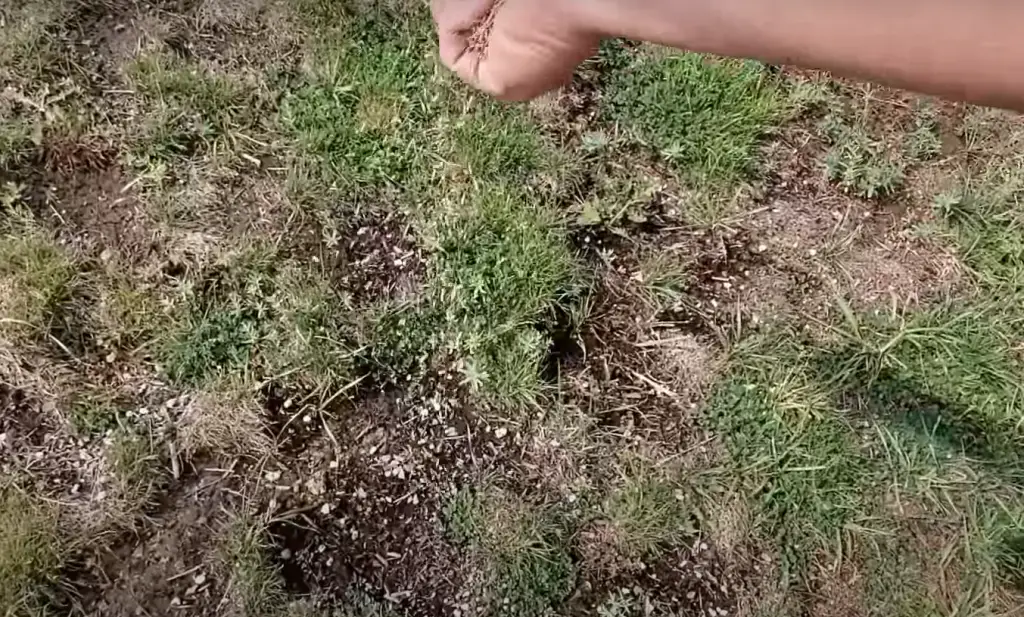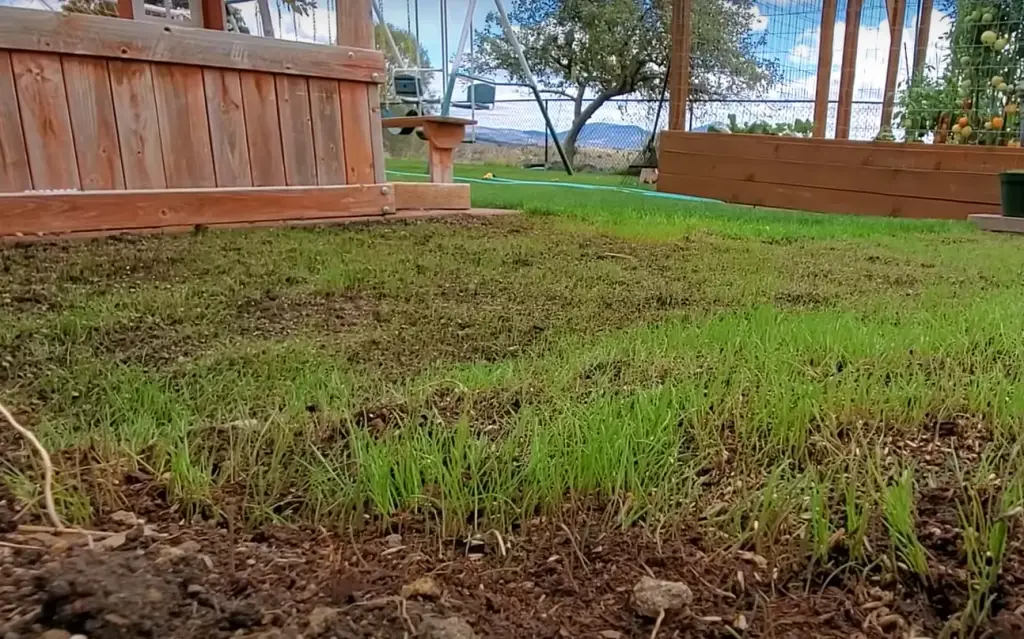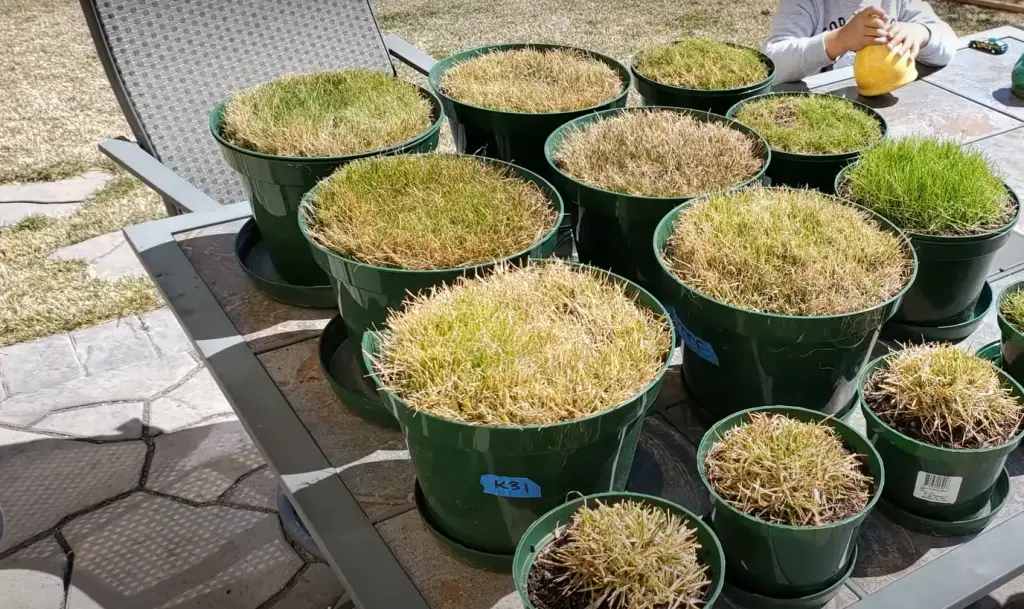Oftentimes, a lush and beautiful lawn is the first thing homeowners notice when viewing potential houses. But creating that kind of stunning outdoor space requires thorough planning and careful maintenance—including making sure you have an idea for how long after planting grass seed it’s safe to walk on your newly laid turf. Whether you’re doing minor landscaping work or revamping your entire front lawn, knowing the basics of grass seed germination can help make sure all your hard work pays off with successful results. With proper care and guidance, anyone can enjoy a pristine yard in no time! This article will provide information regarding waiting periods for different types of seeds to help you give enough time for them to take root before moving on to the next stage of growing grass successfully.
What To Know About Seeding Grass
Before diving into the specifics, it’s important to understand a few key points about seeding grass. Firstly, different varieties of turf may require different waiting periods before they can be walked on.

Cool-season grasses, such as tall fescue and perennial ryegrass, for example, tend to grow more quickly than warm-season types like bermuda grass or zoysia. In addition, the climate and soil type you’re dealing with play a major role in how long it will take for your grass seed to germinate—so keep that in mind when planning out your ideal maintenance schedule.
How Long To Stay Off New Grass Seed
It is important to wait at least three weeks before walking on new grass seed. During this time, the soil should remain undisturbed and watered regularly in order to give the seed enough time to germinate and take root.
It will be especially beneficial for the growth of your lawn if you avoid heavy traffic or activities like playing catch with a Frisbee during this time. Anything that may disrupt the delicate shoots of new grass could cause stunted growth or worse – kill off sections of newly planted turf. [1]So, be patient and give your new grass enough time to grow before you start walking on it.
How To Avoid Walking On Grass Seed
To avoid walking on grass seeds, it’s important to keep off the lawn until the seeds have fully germinated and taken root. This may involve using stones or stepping-stones to create a path that directs foot traffic away from new seed. Alternatively, you can use garden furniture or outdoor seating as makeshift barriers to help protect the area while still allowing access to your backyard.
By keeping off of the lawn until it is well-established, you can reduce the chance of dislodging newly planted seeds. This will also help to avoid compacting the soil, which can reduce its water-holding capacity and increase weed growth.
How to Know When You Can Walk on New Grass
The best way to know when you can walk on new grass seed is by looking out for signs of germination. This includes watching for the emergence of small blades of grass and checking to see that the seeds have been lightly tamped down into the soil. Once you are confident that the seeds have taken root, it’s safe to begin walking on them but it’s important to be especially careful during this time as too much weight or activity can still disrupt their development. You should also wait a few days after mowing before going back onto your lawn since newly cut grass may not be able to support heavy foot traffic yet.

Once the grass has more fully developed and is strong enough to support any weight, you can go back to using your lawn as normal.
Grass Seed Types
There are many different types of grass seed available, and each one has its own unique characteristics that can affect how long they take to germinate. Depending on your climate and environment, you may find that some varieties grow faster than others. Ryegrass is an example of a popular grass seed type. It is known for its rapid growth rate and quick establishment in any soil. This makes it ideal for homeowners who want a luscious green lawn as quickly as possible but still want the quality of a lush grass carpet! [2]
If you’re looking for grass coverage in a shady patch of your lawn, Fescue is the way to go. [3] Finally, there is Kentucky Bluegrass – one of the most popular grass seed varieties used today. It has a deep green color and medium-to-fast growth rate and does particularly well in areas with cooler climates. [4] As with any new lawn project, it’s important to take into account how long each type of seed will take to germinate before starting the process so that you can determine the best time frame for when you’ll be able to safely walk on it again.How To Seed A Lawn
Seeding a lawn is an easy process that can be done in just a few steps:
- Start by mowing the lawn as short as possible. This helps ensure that the seed will be able to come into full contact with the soil.
- Spread a thin layer of topsoil over your entire lawn area and rake it in evenly. This provides a nutrient-rich foundation for your grass seeds to take root in.
- Broadcast your chosen grass seed across the area using either a spreader or hand cranking method. Make sure to spread an even amount across the entire surface – you may need to go back and do another application if your first one was too sparse or clumpy.
- Rake lightly over the top of seeded areas after broadcasting is complete – this helps ensure that the seeds are partially covered and have a better chance of germinating.
- Water the area thoroughly – grass seeds need moisture to germinate, so it’s important to keep them well watered during their first few weeks of growth. After watering, you can either wait for nature to take its course or use a light layer of straw mulch or wood chips to help conserve water and reduce evaporation.
- Once the grass has grown tall enough, it should be mowed on a regular basis in order to keep it healthy and promote even growth.
Following these steps will give you an enjoyable lawn that you can enjoy in no time!
The Importance of Grass Height
The height of your grass is important for a few reasons. Firstly, it affects the overall look and feel of your lawn – shorter grass can make a yard look neater while longer grass can provide a more natural setting. Secondly, the height of your grass is key to keeping weeds at bay – taller grass prevents weed seeds from taking root in the soil as they need sunlight to germinate. Finally, the length of your grass can also affect its water retention capabilities – longer blades help hold moisture better than shorter ones so it’s important to keep them at an optimal length for optimal hydration. [5] All these factors should be considered when deciding how high you want your lawn to be and what type of maintenance regimen will work best for it.
How to Mow Seeded Lawns
Mowing a newly seeded lawn requires special care and attention. Before mowing a newly seeded lawn, it is important to wait until grass has grown to at least 3 inches in height before beginning the mowing process. If the grass is shorter than 3 inches, it may be difficult for the grass seedlings to recover from the stress of being mowed.

When cutting a newly seeded lawn, use a sharp mower blade and adjust the height of the cut so that no more than one-third of the leaf surface area will be removed with each mowing session. This is important because cutting too close can scalping or removing too much leaf material can weaken new growth. [6]
Additionally, mowing on a regular basis is important as this helps keep the lawn healthy and free of weeds. After you are done mowing, make sure to clear out any clippings from the lawn. This will help prevent the growth of diseases in the grass.By following these steps, you can safely and effectively mow a newly seeded lawn. Mowing is an important part of lawn care and mastering the technique will help ensure a beautiful and healthy lawn for years to come!
FAQ
Will Walking on New Grass Damage or Kill It?
No, walking on new grass will not damage or kill it; however, it is best to wait at least three weeks before lightly walking on a newly planted lawn as this will give plenty of time for the seeds to take root. You may find it helpful to mark where the seeds were planted so that you know which areas need extra care when going outside or gardening in those areas until they have had time to fully grow.
Can You Use Too Much Grass Seed?
Yes, it is possible to use too much grass seed. Using too much can cause the seeds to choke each other out and prevent any from taking root in your lawn. To ensure that you don’t use more than necessary, measure out the area you will be seeding and then calculate how many pounds of grass seed you will need for that space – this should help avoid over-seeding!
How Often Do I Water New Grass Seed?
New grass seed needs to be kept moist while it takes root – too much or too little water can both cause problems. Generally, you should water the area 1-2 times a day for the first two weeks and then reduce it to once a day until the grass reaches its full height. Once that happens, you can back off watering every other day or even less depending on how hot and dry your climate is. Make sure to keep an eye on any yellowing areas that may need more frequent watering in order for them to recover!
Does Cutting Grass Make It Grow Faster?
No, cutting grass will not make it grow faster. In fact, it’s best to cut the grass as little as possible in order for it to stay healthy and strong. By cutting too short or too often, you can end up damaging the grass blades and preventing them from getting enough sunlight, water, and nutrients that are necessary for its growth. Instead of cutting more frequently, you should focus on maintaining a consistent mowing schedule that keeps your lawn at an optimal height.
How Long Does It Take Grass Seeds To Sprout?
Grass seeds typically take anywhere from 5-30 days to germinate, depending on the type of grass and the climate.

Once they begin to sprout, it should only be a few weeks before you can start mowing them – just make sure to wait until the grass is at least 3 inches tall.
Why Did My Grass Seed Not Germinate?
There could be a few different reasons why grass seed may not germinate. The most common cause is insufficient moisture – make sure that you are constantly watering the area when the seeds are planted and for the first few weeks afterwards in order to give them a chance to take root. It could also be that the soil is too dense or has too much clay, which can prevent water from penetrating deep enough into the ground. If this is the case, try aerating the area before planting more seeds to help ensure better growth! Other causes of bad germination include using expired grass seed, sowing too shallow or too thickly, or using incorrect fertilizer.
Useful Video: When To Stop Watering New Grass Seed?
Conclusions
Seedling grass is a great way to create beautiful outdoor spaces in your personal or professional life. With the right tips and tricks, you can effectively seed and manage your grass without ever having to worry about walking on new seeds or deterring grass growth. Taking the time to understand mowing angles, watering regimes, and soil nourishment will result in lush, green yards for years to come. If you’re feeling lost while trying to establish your seeded lawn, don’t hesitate to seek advice from an experienced turfgrass professional who can help provide tailored answers for your specific environment. Final words of wisdom—it’s totally okay if the process isn’t perfect from day one! After all, it takes time and effort for grass seedlings to reach their full height potential. With loving care and attention devoted each day, you’ll get the thick lawn of your dreams in no time.
References:
- https://blog.lushlawn.com/how-long-to-stay-off-lawn-after-seeding#:~:text=the%20job%20done.-,How%20Long%20To%20Stay%20Off%20Your%20Lawn,root%20system%20to%20take%20hold.
- https://www.pennington.com/all-products/grass-seed/resources/all-you-need-to-know-about-perennial-ryegrass
- https://www.crabgrasslawn.com/grass-that-grows-in-shade-best-shade-tolerant-grass-seed/#:~:text=3.-,Fescue,to%20plant%20in%20your%20lawn.
- https://www.pennington.com/all-products/grass-seed/resources/all-you-need-to-know-about-kentucky-bluegrass
- https://villageofjacksonwi.gov/?SEC=40D0977D-AA35-4144-AD70-EA8457E97A6A
- https://extension.umd.edu/resource/care-and-maintenance-lawn-after-seeding










Leave a Reply
View Comments